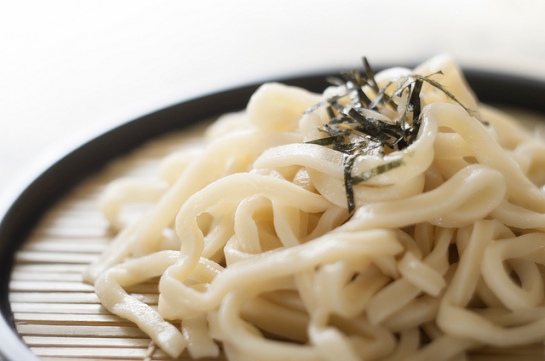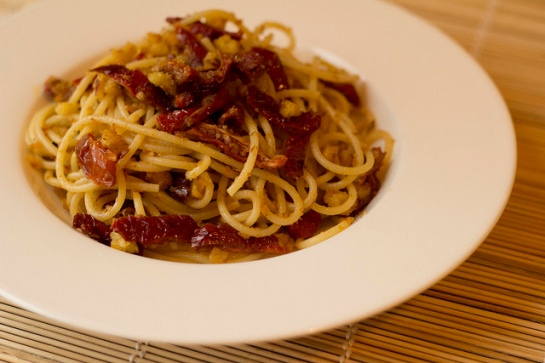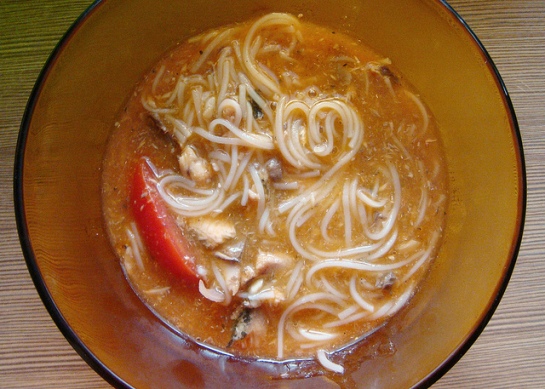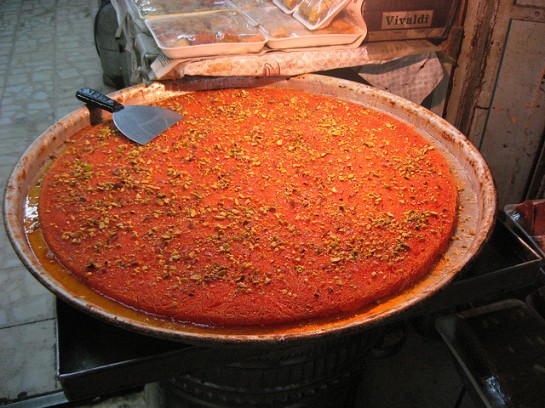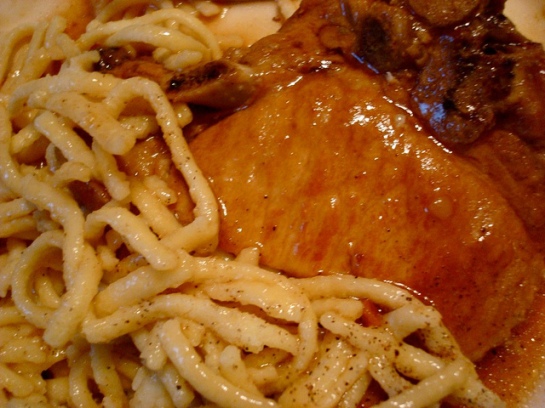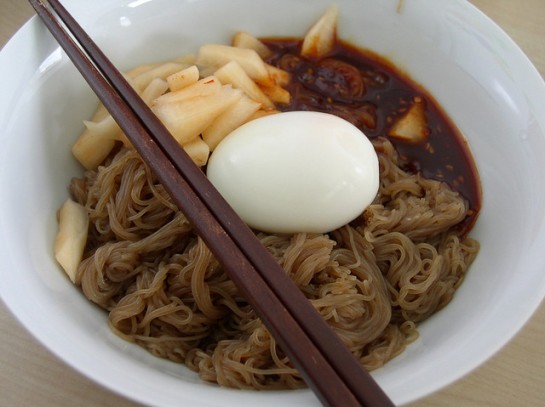Have you ever been to a country which is not in love with its noodles? Call them vermicelli, spaghetti or soba, everywhere, a variety of noodles is produced and diverse dishes are prepared using them. So why not get on board for a gastronomic trip across the globe in search of delicious noodles?
Udon – Japan
It is astounding to think how a simple noodle made of wheat flour can have so many flavors indigenous to Japan’s many regions. Though replaced by instant varieties, it is still possible to taste handmade udon in few places of Japan. Authentic udon is cooked with soy sauce and dashi (a type of stock) after being boiled in water flavored with mirin (rice wine). It is topped with various fruits, vegetables and scallions according to taste and availability. Its origin remains shrouded in mystery. Many believe it was introduced by Buddhist monk named Kukai who came here to study theology.
Kagawa Perfecture is renowned for its variety of udon, named sanuki udon. Specialist udon restaurants of (udon-ya) of Takamatsu can be visited for a memorable udon tasting trip. For international tourists, Shinjuku area of Tokyo is good for having a taste of udon. Japan’s rail stations sell another well known variety of noodles, called soba, that is cheap but very tasty.
There are hundreds of ways of cooking udon. Following is a quick and easy one:
Ingredients:
Frozen udon (150 g or per necessity)
Dashi (a Japanese noodle broth) (about 4 cups)
Soy sauce (2 tbsp)
Mirin (a kind of food wine) (3 tbsp)
Sake (another type of food wine) (2 tbsp)
Chicken thighs cut into bite-size portions
Green onions thinly cut (4 nos)
Shichimi (flavoured pepper) or chili flakes and salt as per requirements
You will find dashi, mirin, sake etc in any Asian food store. In case you prefer to prepare your own then follow the directions mentioned here.
Recipe:
I. In a heavy-bottomed saucepan bring dashi to boil. Add soy sauce, mirin, sake, salt and chicken nuggets. Remove fat and other unwanted items with your ladle.
2. When chicken is tender add udon and wait for couple of minutes.
3. Add chopped green onion keeping a handful aside. Turn off the heat.
4. Garnish soup with pepper and rest of the chopped onion and before serving.
You will find more variations of udon and soba from this place.
Spaghetti – Italy
Spaghetti is certainly one of the most loved varieties of noodles. It is made of macaroni wheat semolina. Spaghetti seems to have entered Italy’s through Sicily around 12th century. It reached the other side of Atlantic about 200 years ago and instantly won the hearts of people there. So, it is not surprising to learn that the record of preparing the largest bowl of spaghetti does not belong to Italy but a restaurant named Buca di Beppo in California. Authentic Italian spaghetti is cooked with generous amount of fresh tomato sauce, oregano and other fresh vegetables drenched in olive oil.
Sicily and Naples continue to serve delicious spaghetti to its residents and guests. But perhaps it would be better to visit Bologna for that exclusive taste of spaghetti.
Here is a recipe for cooking fast and delicious spaghetti Bolognese.
Ingredients
Carrot (One julienned)
Plum Tomatoes (300 g)
Basil (a bunch)
Spaghetti (300 g)
Multi mince (as per requirement)
Breadcrumbs (25 g)
Olive oil, Salt
Recipe:
1. Heat oil and stir in the julienned carrot. Scoop out the tomatoes and add basil (leave few leaves aside for garnishing). Let it simmer for about 12 minutes.
2. Using a blender create a puree of this mixture.
3. Heat through Multi mince.
4. Cook spaghetti following packet instructions. Keep the water aside.
5. Toss together with Multi mince and sauce thinning down a bit using the pasta water if necessary.
6. Sprinkle bread crumbs and shredded basil leaves before serving.
For more recipes of Bolognese sauce and pasta visit Delallo.
Mee Sua – China
In 2005, scientists uncovered the earliest evidence of noodles in China. A sealed bowl of golden yellow noodle was found buried deep into the ground of Lajia archaeological site. The bowlful of noodles survived 4000 years under the earth’s crust. Like many other noodles of Asia, mee sua originated from Fujian, China. Made of wheat, this type of noodles found fond eaters not only among the native Chinese, but also those belonging to Thailand, Philippines and Vietnam. Mee sua is often topped with mushrooms, boiled eggs, oysters and roasted nuts. Taiwan is a good place to taste authentic mee sua.
Homemade mee sua can be equally tasteful. Here is a recipe that could be tried in kitchen.
Ingredients:
Egg (3 nos)
Vegetable oil (1 tbsp)
Pacific clams (8)
Water
Soy sauce
Mee sua (2 packets)
Sesame oil (1 tbsp)
Coriander (chopped for garnishing)
Recipe
1. Beat the egg to light and fluffy with a tbsp of soy sauce.
2. Heat oil in a pan and prepare scrambled egg. Stop before it becomes too dry. It should be slightly moist.
3. Add water to the pan. Blend in soy sauce and put the clams in. Let it simmer for a brief while.
4. In a separate pot bring mee sua to boil in water. Separate the strands carefully with fork or chopsticks. Turn off the heat after 30 seconds.
4. Drain mee sua and transfer in bowls. Coat them with sesame oil and top with scrambled egg, clam soup.
5. Garnish with chopped coriander.
Rice Vermicelli – India
Rice vermicelli, known as semiya, shemai or seviyan, is used in India to produce sumptuous side dishes like dumplings, main courses like biriyani and desserts like payasam. Idiappam is a staple breakfast dish for many residing in the southern part of the country. But of all the different varieties semiya kheer or payasam remains a winner. The vermicelli is boiled in milk and garnished with generous amounts of dates, apricot, roasted cashew nuts and pistachios before being served. Any quality Indian restaurant is capable of serving a delicious bowl of vermicelli kheer.
Vermicelli kheer is not at all a complicated dish.
Ingredients
Seviyan (1/2 packet or as per requirement)
Milk (2 ltr, preferably use whole-milk)
Jaggery or Sugar (as per requirement, may even use stevia or artificial sweetener if need be)
Ghee or clarified butter (3 tbsp)
Pistachhio, date, apricot, cashew (blanched and chopped, 40 g)
Recipe:
1. Heat milk to reduce it around 1.2 ltr.
2. Mean while crush seviyan by hand to roughly half inch pieces. Fry them in ghee or butter until light golden brown. Keep aside in a bowl.
3. Add three ladle full of warm milk into the bowl and let the fried seviyan soak in the milk for about 10 mins.
4. If you are using jaggery mix it with another ladle full of warm milk and few drops of ghee. Skim impurities out of the mixture if any. If you are using sugar instead you can add that directly in the next step.
5. Pour the bowl full of seviyan and jaggery mix into the boiled and reduced milk. Turn down the heat. Stir continuously for a while to ensure the whole mixture becomes thick and creamy.
6. Pour in separate bowls and add garnishing of date, pistachio, apricot and cashew. Serve warm or after refrigerating it for couple of hours.
Eriste – Turkey
In your journeys to Antalya you will find Turkey’s very own version of noodle, eriste is being served. It is a derivation from Persian kesme and is made from a mixture of flour, oil, eggs and water. Eriste is cooked like pasta, with soup. Potatoes, carrots and other vegetables as well as meatballs are added to enhance its taste.
Many food scientists often consider paludeh to be the earliest forms of noodles eaten uninterrupted for last 3000 years. Like payasam of India, paludeh is a dessert recipe and is sold in ice cream stores across. With a little effort, in Istanbul’s food marts too you will find taste of paludeh toppled with almond and pistachio.
Ingredients:
Flour (1 ¼ cup)
Arugula (1 bunch shredded)
Eggs (2 lightly beaten)
Walnuts (roasted and chopped, a handful)
Olive oil (2 tbsp)
Salt & Pepper
Process of Preparing the Noodles (Eriste)
Sift flour and make a hole. Pour in water, oil and beaten egg. Make dough and refrigerate for 20 minutes.
Roll dough to a papery thin layer after sprinkling little bit of flour on the rolling surface.
Cut the dough to pieces about a centimeter wide.
Spread them on a paper towel / parchment till they are nice and dry.
Recipe:
Bring water to boil and add eriste. Wait for about 5 minutes. Taste eriste to check if it is nicely cooked and tender.
Add noodles, salt and pepper in few drops of olive oil. Add shredded arugula and stir for about 2 minutes.
Garnish with roasted walnuts.
For preparing the noodles you may watch the steps as shown here. Even if the language is unfamiliar it won’t be difficult to follow the steps.
Spätzle – Germany
The word noodle originated from the German word Nudel. So the land which gave noodle its name is expected to have its very own variety of the same. Spätzle is a unique variety of noodle, both in shape, size and ingredient. It is made of egg and is much thicker than any other string of noodle on this list and I am not talking about the commercial spätzle. In fact, the inspiration of Maggi (Nestle’s internationally known noodle) came from spätzle. It is widely eaten in Switzerland, Austria, Hungary and East European countries knopfle, galuska or other native forms. Passatelli, one of northern Italy’s favorite dishes, is also variety of spätzle. Spätzle can be turned into a flavorful dessert as well adding generous amount of butter, sugar, cherries and apples. A hearty dish of spätzle can be enjoyed in Karlsruhe, Stuttgart or Munich.
Authentic German suggests making the noodles (spätzle) at home which requires a Spätzle Maker. If you have one such or can borrow from a friend then watch this video to learn how to make spätzle at home. Alternatively, you may use a ricer. Another recipe for homemade can be found here.
Dotori Guksu – South Korea
Authentic dotori guksu (or dotori naengmyun) is made of acorn flour or starch, so it is also known as acorn soba. These acorns are collected from red or white oaks which give this type of noodle a special taste and aroma. Due to lack of sufficient ingredient, buckwheat is now being used to produce dotori guksu. The strings are finer in buckwheat soba and lack the flavor of acorn starch. Though, unless you taste the original you would not understand the difference. Local connoisseurs will tell you that each acorn differs in taste from the other, so even if made from acorn starch no two dishes of acorn soba can be identical. Frankly, we are not in a position to testify such claims. Both the varieties are cooked in broth rich with vegetables, sea food and meat. Seoul and Busan’s upmarket restaurants serve authentic dotori guksu. Alternatively, you may visit Balwoo Gongyang Temple Kitchen in Insa-dong, Seoul to taste not only acorn noodles but other Korean delicacies.
Following one is a hot recipe for dotori guksu.
Ingredients:
Noodles (200 g)
Cucumber (1 chopped)
Egg (hard boiled cut into half)
Kimchi (vegetable seasoning) (chopped 30 g)
Kimchi juice (1/3 cup)
[For making your own kimchi juice see this]
Clove (minced, 1/3 tbsp)
Sugar (1 tbsp)
Sesame Oil (2 tbsp)
Vinegar (2 tbsp)
Roasted sesame
Salt & Pepper
Recipe:
1. Add everything except the noodles, cucumber and egg in a bowl and mix well.
2. Add noodles in pot of boiling water, gently separate the strands. Close the lid and let it stand for few of minutes till tender.
3. Rinse the noodles in a bowl and stir in the seasoning.
4. Top with chopped cucumber and half portion of the hard boiled egg.
This weekend why not unwind with a bowlful of noodle in hand?
Image Courtesy:
Hiroyuki Takeda, Digipam, Luca Nebuloni, Divya Kudua, Asha Pagdiwala, Tracy Hunter, Barbara Ann Spengler, Jens Ohlig
